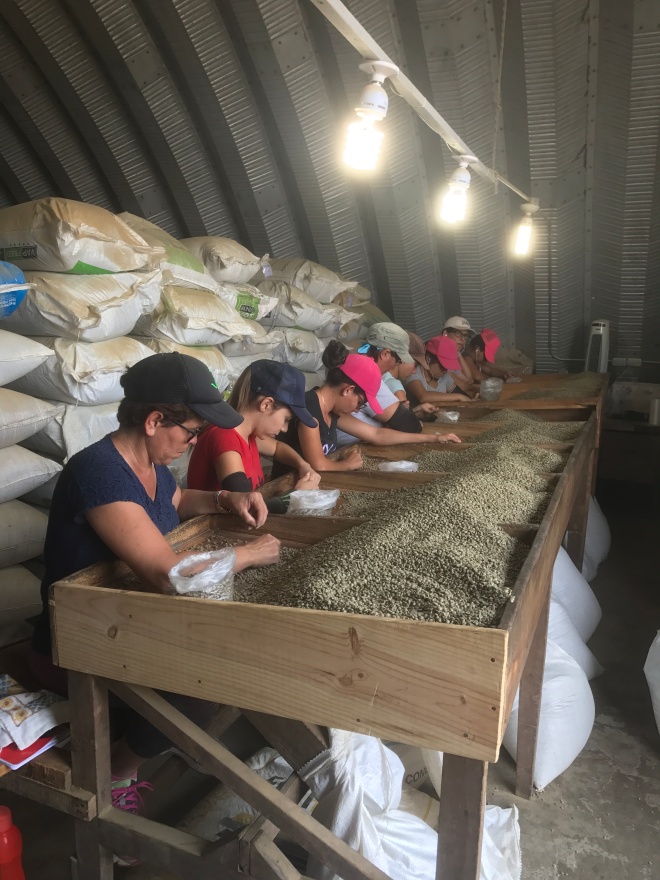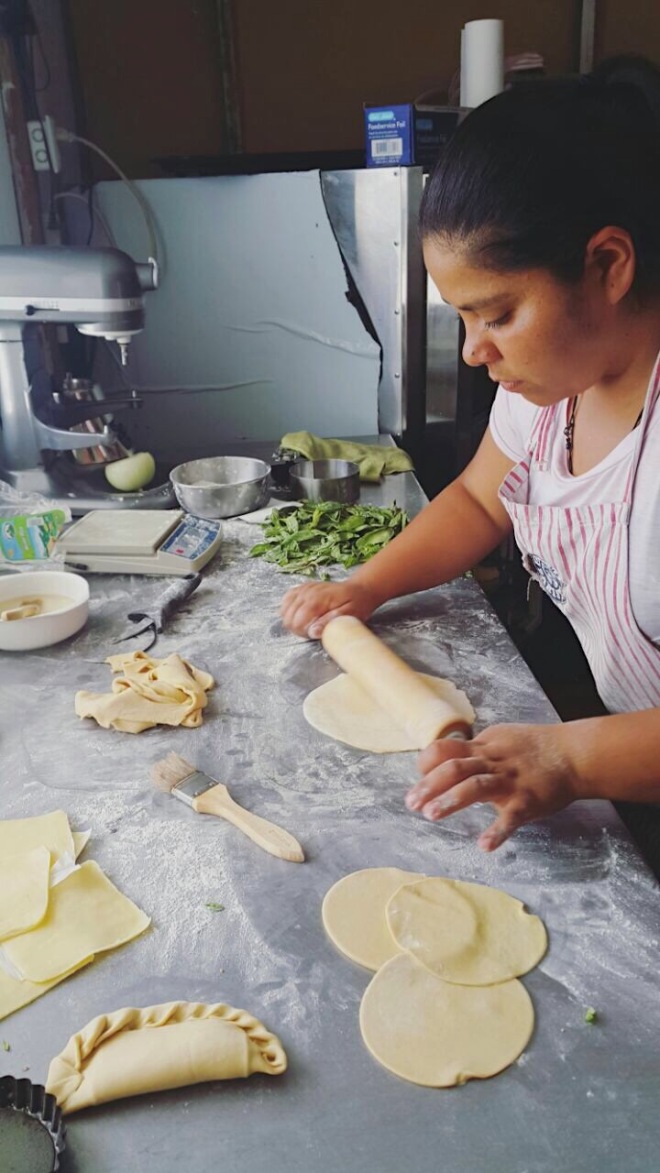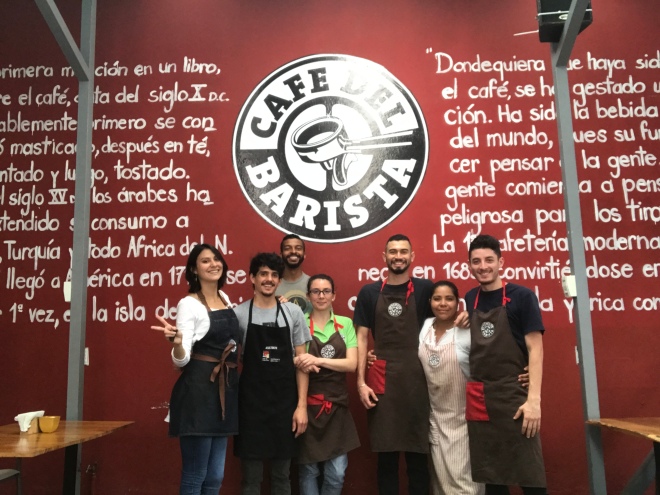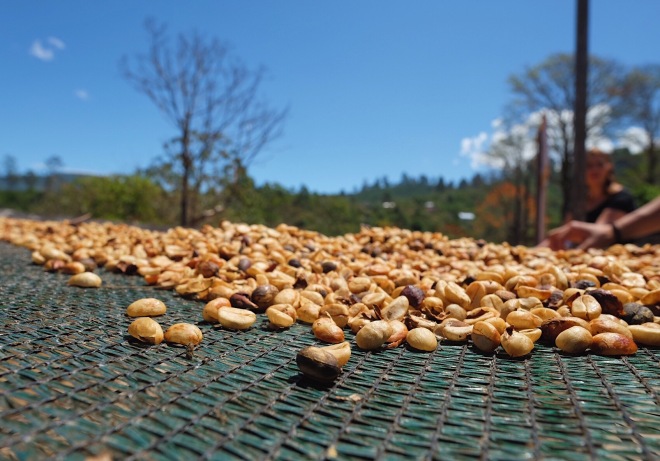I met Arturo at the Cafe Expo Tarrazu 2018. The first thing he said to me, “Yoroshiku Onegaishimasu,” went completely over my head. I was still rather new in Costa Rica, and getting adjusted to hearing Spanish all the time that the Japanese didn’t even register. It wasn’t until my wife, who knows a little Japanese, replied in Japanese that my mind finally picked up on the language shift.

The son of a rather large coffee farm owner (obviously the farm is large…the father is in great shape), Arturo dedicates his free time to helping around the farm. Whether that means harvesting, processing, or giving tours, it seems like he’s all over the place and is obviously very knowledgable about Cafe Sol Naciente’s operations. When he’s not helping his father produce quality coffee, Arturo spends his time at his 9-5 as an accountant for the local electric company, coaching professional woman’s soccer, teaching himself Japanese, or, supporting his wife at her professional hand-ball games. Fortunately for us, Arturo was able to set aside some time and give a tour of his father’s coffee farm, Finca Sol Naciente.
Cafe Sol Naciente literally translated comes out to Coffee Rising Sun. It’s no surprise then that Japan, Land of the Rising Sun, is this farm’s target consumer, and, fortunately enough, their leading importer.

The farm itself sits just outside of the small town of San Marcos, Costa Rica. After a nerve-wracking 20 minute drive through near vertical mountain “roads” (I will never take a FWD sedan again), we arrived at the entrance to the Finca, where a welcoming sign in Spanish, English, and Japanese invited us to the farm.

The day we arrived, even though towards the end of season, Arturo and his family were in the middle of processing some recently harvested coffee fruit.
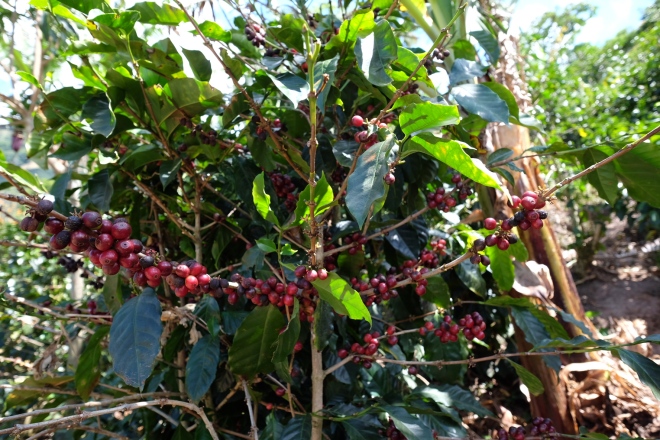
The coffee fruit is picked, boxed, and driven to the processing plant, where, depending on the finish, it is stripped of its outer layer, dried, and finally bagged.





Since some fruit sneaks by with its outer layer still intact, as seen above, the selection is sent through again, sometimes three times to ensure uniformity. It is absolutely crucial, when coffee farms are producing a certain wash, or aspiring for a certain taste, that there is uniformity among the beans. One bean picked too early, not processed enough, or dried too little, can completely change the taste of a cup of coffee. Although some coffee defects, such as Shells or Floaters, are nearly impossible to prevent, and even harder to detect, specialty coffee farmers must go above and beyond to prevent and detect what they can, in order to provide a quality cup.


Cafe Sol Naciente has a goal of repurposing 100% of their waste. As a result, they dry the stripped outer skin, and re-purpose it as fertilizer on the farm.


Natural finish coffee, as seen above, is dried with the outer layer still attached to the coffee. This gives the cup a much fruitier taste, compared to other processes.


“Honey” processed coffee, what Costa Rica is known for in the coffee industry, is dried with its mucilage still intact, as opposed to “washed” or “full wash” coffee where the mucilage is removed. The coffee dried with the mucilage still attached provides a much sweeter cup. To make matters even more complicated, there are varying levels of “honey” finish, with gold honey, red honey, and black honey. As the level of honey intensifies or “darkens,” so does the sweetness of the cup. However, black honey, dried slower using more shade to leave more mucilage intact than gold and red honey, requires much more maintenance and care as the risk of “souring” or undesired fermentation increases drastically.




Cafe Sol Naciente experiments with different fruit planted next to coffee plants. The fruit, in this case, banana, mango, or lemon trees provide natural shade for the coffee. Arturo Sr., also wants to see if the byproducts of the fruit trees will have any effect on the taste of the coffee. Very excited to try the results.




As the tour winded down, Chris, Arturo’s nephew who accompanied us on the tour, was our saving grace as he asked all the questions I hadn’t even thought of. My personal favorite, “Why does coffee taste so good?” has stayed with me to this day. Some people say it’s the phenolic lipids in the coffee, but I’m more interested in what Chris has to say on the matter the next time we visit.
We couldn’t be more thankful for the tour. Hopefully one of these days, I’ll be able to taste the results of the “fruit tree” experimentation or, equally as enticing, see my first professional handball game. Until then, I wish Cafe Sol Naciente and family the best of luck.







